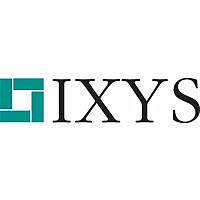CPC5611ATR IXYS, CPC5611ATR Datasheet - Page 12

CPC5611ATR
Manufacturer Part Number
CPC5611ATR
Description
Manufacturer
IXYS
Datasheet
1.CPC5611ATR.pdf
(18 pages)
Specifications of CPC5611ATR
Lead Free Status / RoHS Status
Compliant
CPC5610/CPC5611
rent. The photocurrent, a linear representation of the
receive signal, is amplified and converted to a differen-
tial voltage output on RX+ and RX-.
Variations in gain are controlled to within ±1 dB by an
on-chip automatic gain control (AGC) circuit, which
sets the output of the photoamplifier to unity gain.
To accommodate single-supply operation, LITELINK
includes a small DC bias on the RX outputs of 1.0
Vdc. Most applications should AC couple the RX out-
puts as shown in Figure 6.
LITELINK may be used for differential or single-ended
output as shown in Figure 6. Single-ended use will
produce 6 dB less signal output amplitude. Do not
exceed 0 dBm into 600
Figure 6. Differential and Single-ended Receive
3.3.2 Transmit Signal Path
Connect transmit signals from the host equipment to
the TX+ and TX- pins of LITELINK. Do not exceed a
signal level of 0 dBm in 600
tial transmit signals are converted to single-ended sig-
nals in LITELINK. The signal is coupled to the transmit
photodiode amplifier in a similar manner to the receive
path.
The output of the photodiode amplifier is coupled to a
voltage-to-current converter via a transconductance
stage where the transmit signal modulates the tele-
phone line loop current. As in the receive path, gain is
set to unity automatically, limiting insertion loss to 0,
±1 dB.
12
Host-side CODEC
or Voice Circuit
Path Connections to LITELINK
RX+
RX
RX-
0.1uF
0.1uF
0.1uF
(2.2 V
(or 2.2 V
P-P
LITELINK
RX+
RX-
RX+
) signal input.
P-P
). Differen-
www.clare.com
Figure 7. Differential and Single-ended Transmit
3.4 DC Characteristics
The CPC5610 and CPC5611 are designed for world-
wide application regarding DC characteristics, includ-
ing use under the requirements of TBR-21. The ZDC,
DCS1, and DCS2 pins control the VI slope character-
istics of LITELINK. Selecting appropriate resistor val-
ues for R
application circuits assure compliance with DC
requirements.
3.4.1 Resistive Termination Applications
LITELINK includes a telephone line current limit fea-
ture that is selectable by selecting the desired value
for R
Clare recommends using 8.2
America and Japan, limiting telephone line current to
133 mA.
3.4.2 Reactive Termination Applications
TBR-21 sets the telephone line current limit at 60 mA.
To meet this requirement, set R
See Clare application note AN-146
tive LITELINK Designs
ing in this application.
Host CODEC or
Transmit Circuit
Host CODEC or
Transmit Circuit
I
CL
Amps
ZDC
TXA1
TXA2
TXA1
ZDC
(R16) using the following formula:
=
Path Connections to LITELINK
------------ -
R
1V
ZDC
(R16) and R
+
0.011A
for information on FET heat sink-
0.1uf
0.1uf
0.1uf
0.1uf
LITELINK
LITELINK
TX-
TX+
DCS
TX-
TX+
(R15) in the provided
ZDC
for R
Guidelines for Effec-
(R16) to 22.1 .
ZDC
+
-
+
-
in North
Rev. 9.0










